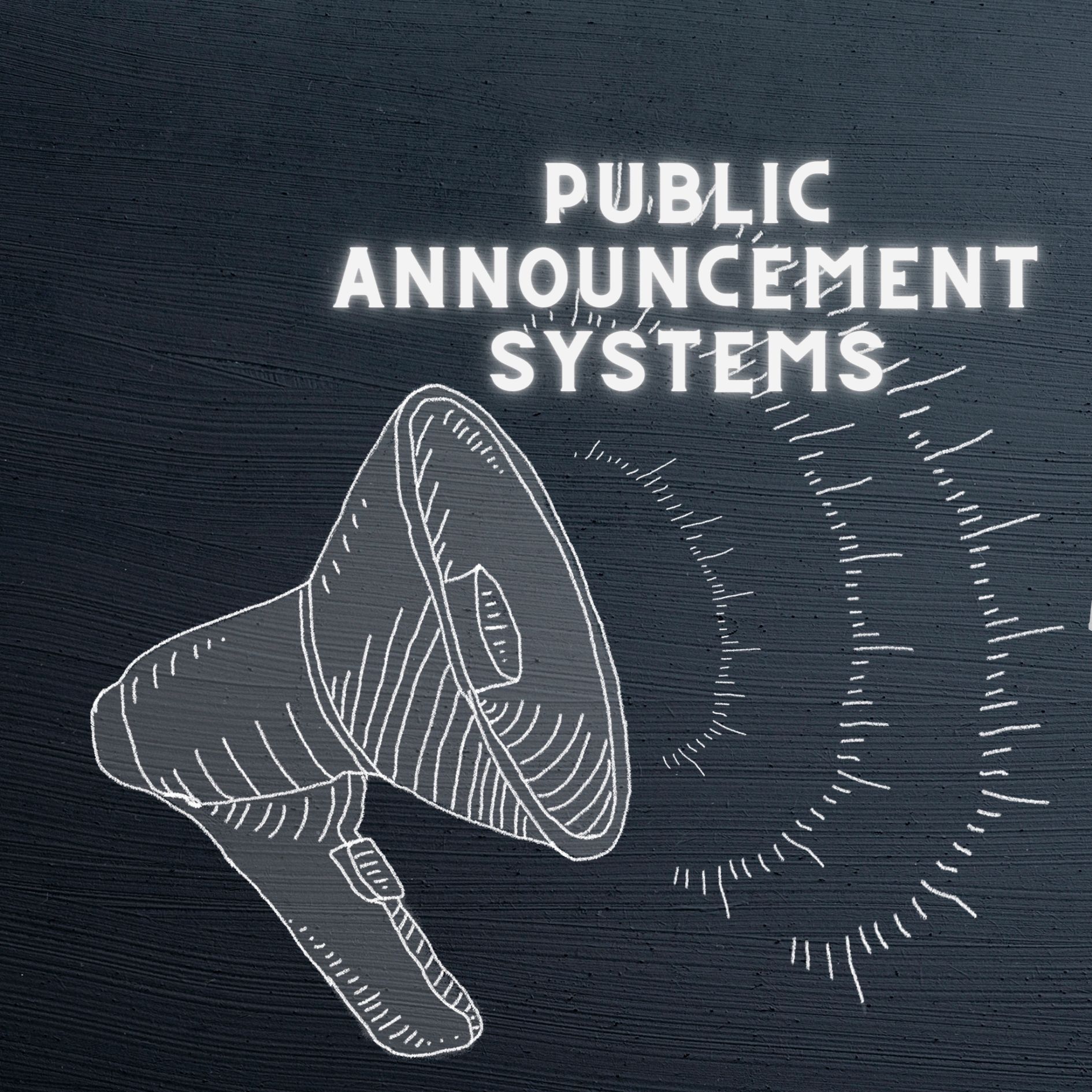Introduction
In today’s fast-paced business world, effective communication is vital for the success of any organization. Public Announcement (PA) systems are crucial in disseminating information, making announcements, and ensuring a safe and well-informed environment for employees and customers. This comprehensive guide will delve into Public Announcement systems, exploring their importance, components, installation, and maintenance, and how businesses can optimize their communication strategies using these systems.
Understanding Public Announcement Systems
Public Announcement systems, commonly called PA systems, are communication tools that convey important messages, announcements, and alerts to a large audience within a specific area. These systems are a vital link between businesses and their employees, customers, or visitors, ensuring that essential information reaches everyone on time.
The Importance of Effective Communication in Businesses
In the corporate landscape, effective communication is the cornerstone of success. Clear and reliable communication is non-negotiable, whether conveying daily announcements to employees, providing safety instructions during emergencies, or making public announcements in retail stores.
Implementing a robust PA system helps businesses avoid miscommunication, reduce response times, and improve overall productivity. Additionally, it fosters a sense of security and confidence among occupants, making them feel valued and informed.
Advantages of Implementing a PA System
1. Real-Time Information Dissemination:
PA systems enable instant communication, allowing businesses to convey time-sensitive messages promptly.
2. Emergency Preparedness:
PA systems can quickly deliver evacuation instructions and safety protocols in critical situations like fire outbreaks or security breaches.
3. Increased Efficiency:
By centralizing communication, PA systems streamline operations and minimize the need for individual notifications.
4. Enhanced Customer Experience:
In commercial spaces, well-placed PA systems inform customers about promotions, events, and important announcements.
Components of a Public Announcement System
A typical PA system consists of various components working together to ensure seamless communication. Understanding these components is crucial for businesses to choose the right system that caters to their unique needs.
Speakers and Amplifiers:
Speakers, with their remarkable capability, take the electrical signals they receive and transform them into mesmerizing audible sounds that captivate the audience’s ears. Amplifiers boost these signals to drive the speakers effectively, ensuring sound reaches every corner of the designated area.
Microphones and Mixing Consoles:
Microphones are input devices that capture audio and convert it into electrical signals. Mixing consoles allow operators to adjust sound levels, add effects, and combine multiple audio sources for a well-balanced output.
Signal Processors:
Signal processors, such as equalizers and compressors, optimize audio signals for improved clarity and quality.
Control Interface and Connectivity:
The control interface provides a user-friendly way to manage the PA system. Connectivity options include wired and wireless connections to various audio sources.
Types of Public Announcement Systems
PA systems come in different configurations, each suited for specific applications and environments. Understanding the various types helps businesses make informed choices.
Wired PA Systems:
Wired PA systems are connected using physical cables. They are suitable for fixed installations and offer stable and reliable communication.
Wireless PA Systems:
Wireless PA systems use radio frequency technology to transmit audio signals without cables. They are ideal for flexible setups and temporary installations.
Hybrid PA Systems:
Hybrid PA systems combine wired and wireless elements, providing the advantages of both configurations. They offer versatility and adaptability to changing needs.
Choosing the Right PA System
Selecting the appropriate PA system requires thoroughly assessing the organization’s communication requirements, space constraints, and integration possibilities.
Assessing Communication Needs:
Identify the messages and announcements that must be conveyed through the PA system. This process could include emergency alerts, general announcements, or promotional messages.
Considering Location and Space:
Evaluate the size and layout of the premises to determine the number and placement of speakers needed for effective coverage.
Integration with Existing Infrastructure:
If the business already has other communication or security systems, ensure the selected PA system can integrate seamlessly.
Installation of Public Announcement Systems
optimal performance and reliability, the installation of a PA system should be carefully planned and executed.
Planning and Site Survey:
Firstly, conduct a site survey to assess the acoustic characteristics of the premises and identify potential challenges in sound distribution.
Professional Installation and Wiring:
Secondly, engage experienced technicians to install the system, position the speakers correctly, and handle all wiring connections.
Testing and Calibration:
Thirdly, thoroughly test the PA system after installation to confirm proper functioning. Calibration ensures consistent audio quality across all speakers.
Maintenance and Troubleshooting:
Fourthly, regular maintenance and prompt troubleshooting are essential to keep the PA system in top-notch condition.
Regular Inspection and Cleaning:
Schedule periodic inspections to detect and address any issues promptly. Keep the system clean to avoid audio distortion.
Identifying and Resolving Common Issues:
Educate staff about common problems that may arise and provide troubleshooting guidelines to minimize downtime.
Upgrading and Expanding the System:
Consider upgrading or expanding the PA system to accommodate new areas as the business grows.
Optimizing Communication with PA Systems:
The full potential of a PA system’s full potential businesses can adopt specific strategies for effective communication.
Emergency Notifications and Safety Procedures:
Train employees to handle emergencies and issue clear and concise instructions using the PA system.
Broadcasting Important Announcements:
Utilize the PA system to promote events, sales, or any information requiring immediate attention.
Enhancing Customer Experience:
The PA system creates a welcoming atmosphere in retail or hospitality settings and guides customers through their visits.
Integrating PA Systems with Other Technologies:
Businesses can integrate PA systems with other technologies to create a comprehensive communication ecosystem.
Connecting with Fire Alarm Systems:
Integrate the PA system with the fire alarm to trigger automated emergency evacuation announcements.
Integration with Access Control Systems:
Use the PA system in conjunction with access control to manage entry and exit points efficiently.
Synchronizing with Background Music Systems:
In commercial spaces, sync the PA system with background music to maintain a pleasant ambiance while making announcements.
Best Practices for Using Public Announcement Systems
Adopting best practices ensures that the PA system functions optimally and serves its purpose effectively.
Crafting Clear and Concise Messages:
Firstly, keep announcements simple, relevant, and easy to understand to avoid confusion.
Training Employees for Effective Communication:
Secondly, train designated personnel on the proper use of the PA system and the tone of communication.
Maintaining Volume and Sound Quality:
Thirdly, ensure that the sound volume is appropriate for the space and that the audio is clear and distortion-free.
Legal and Ethical Considerations
Businesses must adhere to legal and ethical guidelines when using PA systems.
Compliance with Privacy Laws:
Firstly, respect individual privacy rights and avoid recording private conversations without consent.
Avoiding Misuse of PA Systems:
Secondly, ensure that the PA system is used for its intended purpose and not for irrelevant or personal announcements.
Handling Sensitive Information:
Be cautious when sharing sensitive or confidential information over the PA system.
The Future of Public Announcement Systems
As technology evolves, so will PA systems, presenting exciting business possibilities.
Advancements in PA Technology: Expect more advanced features, such as voice recognition and integration with artificial intelligence.
Integration with Smart Building Solutions: PA systems will be integrated with smart building solutions to create seamless automation.
Predictions and Trends: Anticipate the increased use of mobile apps and cloud-based solutions for PA systems.
The Future of Public Announcement Systems: The future of Public Announcement systems looks promising as technological advancements continue to revolutionize how businesses communicate.
Advancements in PA Technology:
With the rapid progress in audio processing and wireless communication, PA systems will become even more sophisticated. Voice recognition technology will likely be integrated into PA systems, enabling hands-free operation and making it easier to broadcast announcements or alerts. This feature will prove especially useful when manual operation is not feasible, such as during emergencies or busy periods.
Additionally, AI-driven functionalities might be incorporated, allowing the system to analyze patterns in announcements and responses, leading to more targeted and effective communication. The system could learn from past interactions and adapt its announcements to suit specific situations or audience preferences.
Integration with Smart Building Solutions:
As the concept of smart buildings gains traction, PA systems will seamlessly integrate with other smart technologies. This integration will enable centralized control of various building systems, including lighting, climate control, security, and PA systems. Businesses will enjoy greater convenience and energy efficiency by managing multiple functions through a single platform.
For example, smart PA systems can automatically trigger evacuation protocols during emergencies while adjusting lighting to guide occupants safely to exits. Such comprehensive integration will enhance safety and optimize resource management within the facility.
Predictions and Trends
As PA systems evolve, certain trends are likely to emerge:
1. Mobile Apps for PA Control:
Firstly, businesses might introduce dedicated mobile apps that allow authorized personnel to operate and manage the PA system remotely. These apps will provide real-time monitoring, notifications, and the ability to make announcements from anywhere within the organization.
2. Cloud-Based Solutions:
Secondly, cloud-based PA systems will become more prevalent, offering scalability, flexibility, and easy updates. Businesses will appreciate the reduced hardware costs and the ability to access the system from various devices.
3. Multilingual Support:
Thirdly, with the globalized nature of businesses, PA systems will increasingly support multiple languages to cater to diverse audiences. This system will ensure that messages reach all occupants, regardless of their primary language.
4. Enhanced Audio Quality:
Fourthly, advancements in audio technology will continue to improve sound quality, ensuring that announcements are clear and intelligible, even in noisy environments.
5. Intelligent Analytics:
Finally, PA systems could employ data analytics to assess communication effectiveness, allowing businesses to fine-tune their announcements and gauge audience engagement.
Conclusion
Public Announcement systems are integral to modern businesses, facilitating effective communication, safety protocols, and customer engagement. In addition, as businesses continue to recognize the importance of seamless communication, investing in a reliable and future-ready PA system becomes paramount.
When choosing a PA system, businesses must carefully assess their unique needs, consider the size and layout of their premises, and explore integration possibilities with other smart technologies. Regular maintenance and adherence to legal and ethical considerations are vital to ensuring the system’s optimal performance and responsible usage.
Moreover, the future of Public Announcement systems holds incredible promise with advancements in voice recognition, AI integration, and seamless compatibility with smart building solutions. Mobile apps for remote control, cloud-based solutions, multilingual support, and improved audio quality are among the trends businesses can expect to witness in the evolution of PA systems.
Remember, effective communication is the foundation of any successful organization, and a well-implemented Public Announcement system will undoubtedly contribute to a safer, more informed, and more productive environment for all.
Visit our website to know more!
Follow us on LinkedIn:



